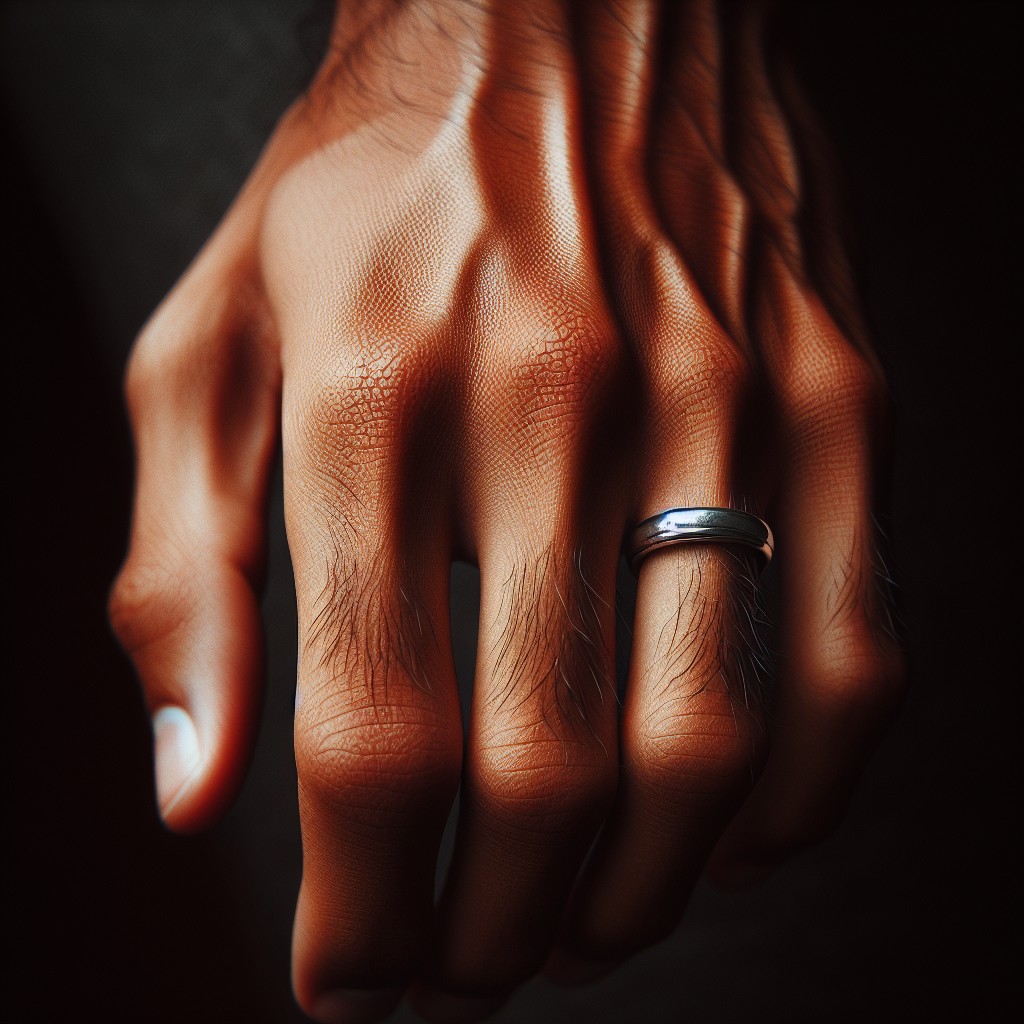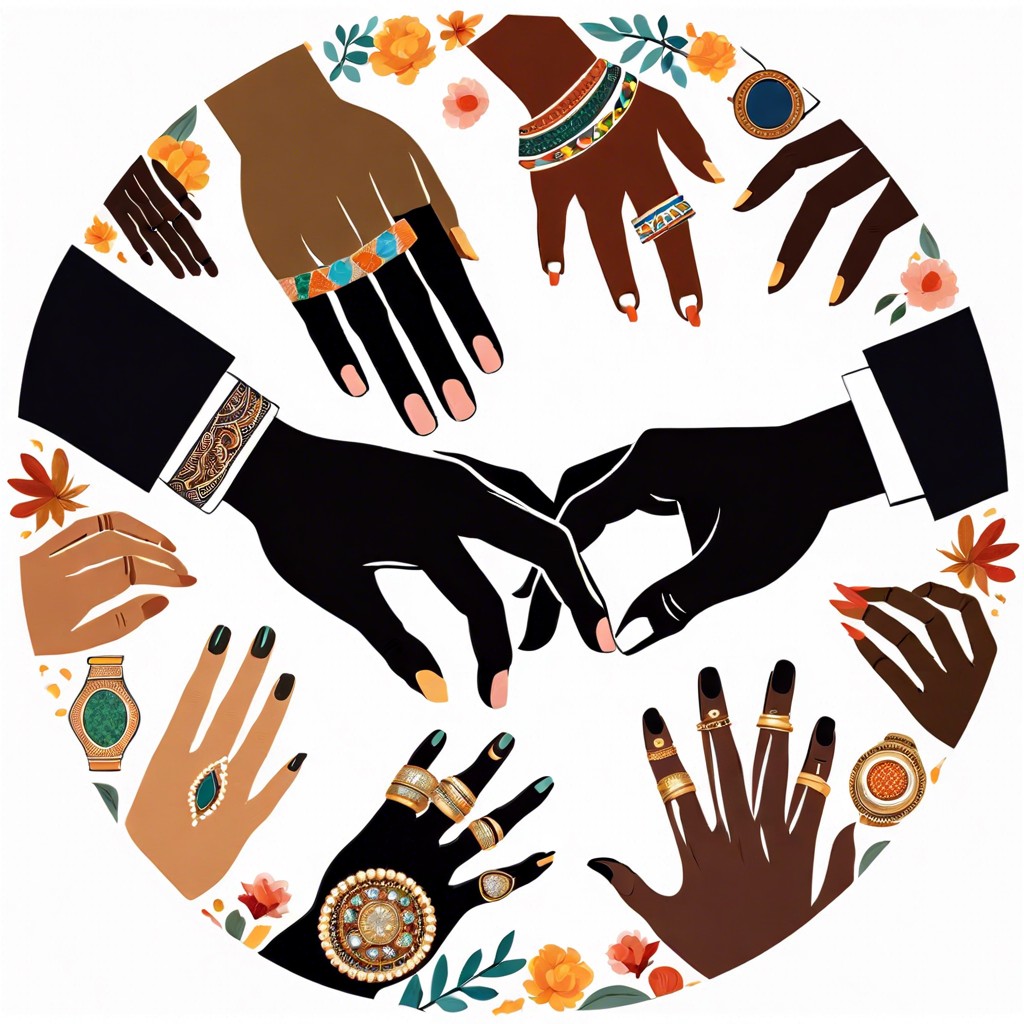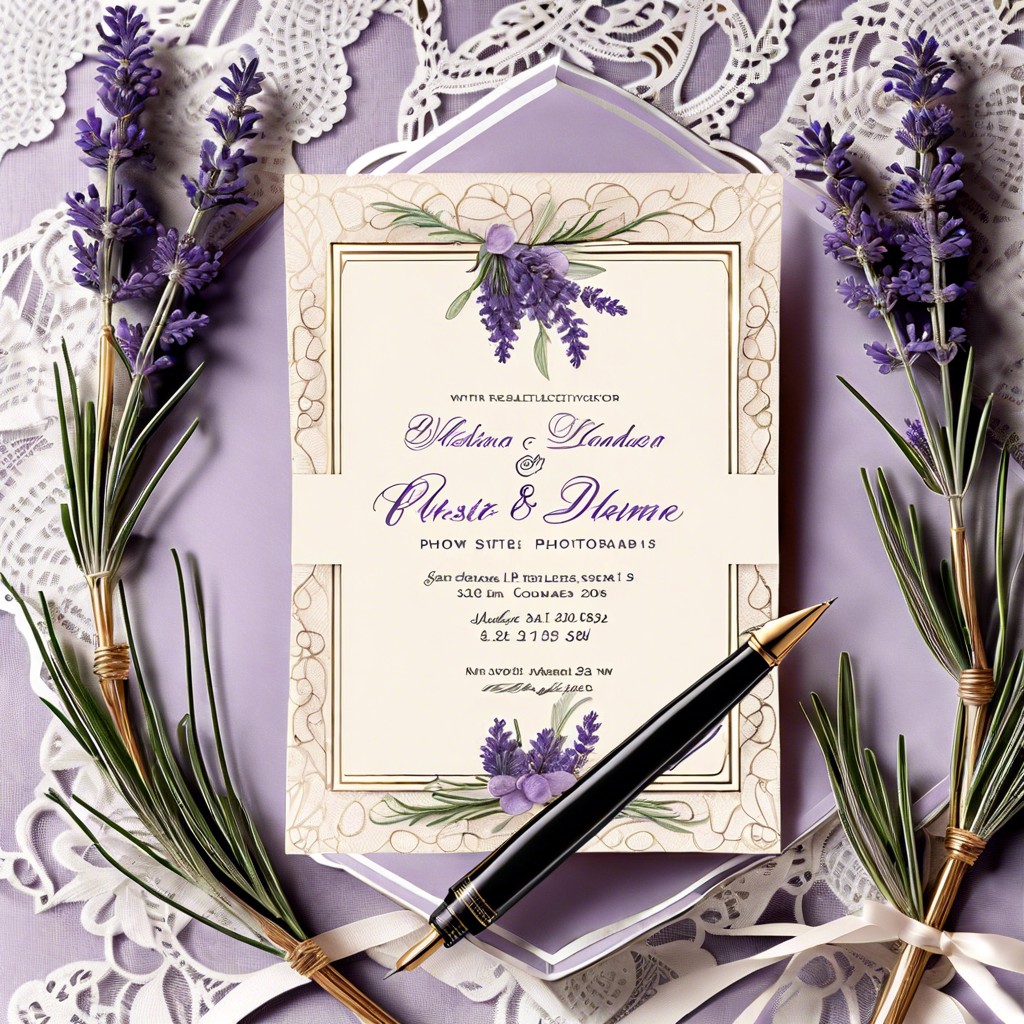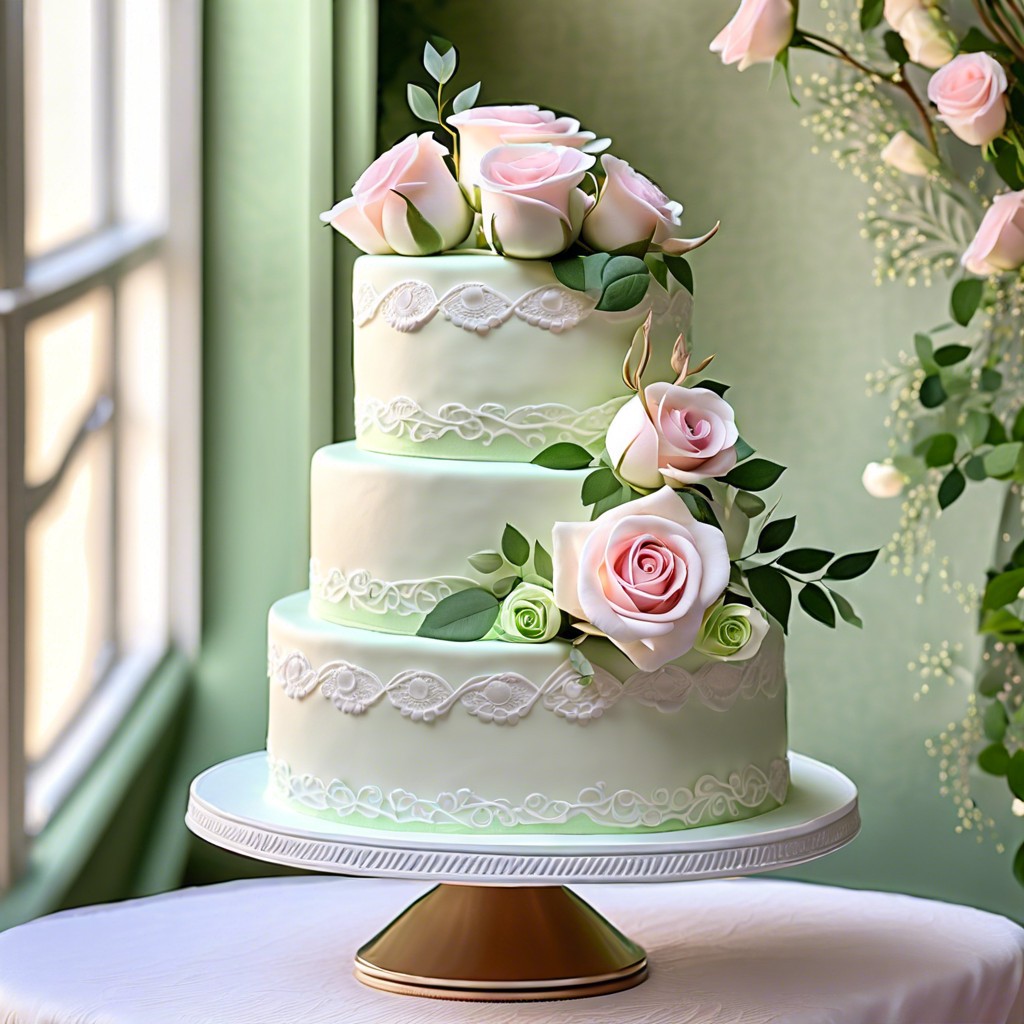Unraveling the traditions and cultural customs around the world, this article clarifies which finger the wedding ring is worn on.
Key takeaways:
- Wedding rings are traditionally worn on the fourth finger of the left hand in Western cultures.
- Some cultures prefer the right hand for wedding rings.
- The choice of finger is often influenced by geography, religion, and family practices.
- The engagement ring is traditionally worn on the left hand’s fourth finger.
- There are various ways to wear engagement rings and wedding bands to suit personal style and practical needs.
Which Is The Wedding Ring Finger?

Traditionally, the fourth finger on the left hand, known as the ring finger, is designated for wedding rings in many Western cultures. This custom stems from the ancient belief that this finger houses the “vena amoris,” or vein of love, which runs directly to the heart.
However, some cultures prefer the right hand for wedding bands, reflecting varied traditions and beliefs. This distinction often hinges on geography, religion, and family practices. For instance, in some Eastern European and South American countries, couples wear wedding bands on the right hand.
It’s important to note that regardless of the traditional norms, choosing which finger to wear your wedding ring on is a personal decision. Some modern couples opt for different fingers due to comfort, occupation, or personal significance.
Cultural Differences
While in many Western cultures, the wedding ring is traditionally worn on the left hand’s ring finger, customs vary across the globe. For instance, in countries like Russia, India, and Norway, it’s customary to wear the wedding band on the right hand’s ring finger. This practice often stems from cultural interpretations of the right hand being associated with oaths and vows.
Some Eastern Orthodox Christians also don the ring on their right hand, symbolizing the “right hand of God,” which is significant in their religious tradition. In contrast, the left hand is used in regions like North America and the UK, possibly related to ancient Romans’ belief that the “vena amoris” or “vein of love” ran directly from the left ring finger to the heart.
Jewish tradition once dictated the wedding ring be placed on the index finger during the ceremony, but it’s typically moved to the ring finger afterwards. Meanwhile, modern interpretations and personal preferences have led to a variety of practices; some may choose to wear the ring on either hand based on comfort, profession, or even the symbolism they personally ascribe to each hand.
Origin of the Engagement Ring Finger
Tracing back to ancient Egypt, the belief that the left hand’s fourth finger housed the “vein of love” (vena amoris) which led directly to the heart, established the tradition of wearing the engagement ring on this particular digit. The Romans adopted this custom, intertwining love with a physical connection to the heart.
In the Middle Ages, the engagement ring came to symbolize commitment and ownership. Rings were often exchanged to signify a pledge to marry.
During the Renaissance, intricate ring designs and the inclusion of precious gems became symbols of status and affection. The ring’s placement on the left hand remained consistent, honoring the legacy of connections to the heart.
Over time, the left ring finger became widely accepted in Western cultures as the designated finger for engagement rings, while some Eastern traditions prefer the right hand, acknowledging cultural and religious practices.
During the Wedding Ceremony: What Hand Does the Wedding Ring Go On?
During traditional Western wedding ceremonies, the wedding ring is customarily placed on the left hand’s fourth finger. This practice dates back to the ancient belief that this particular finger houses the “vena amoris,” or vein of love, that runs directly to the heart. On this highly anticipated occasion, the ring exchange is a focal point symbolizing the commitment between the couple.
As you prepare for your own ceremony, keep in mind the following:
- In most cases, the engagement ring is temporarily moved to the right hand to leave the left hand’s ring finger unoccupied.
- The wedding band is placed first on the left ring finger during the exchange of the rings, allowing the engagement ring to be slipped on top of it afterward. This ensures the wedding band is closer to the heart.
- Some individuals choose to have their wedding band and engagement ring soldered together before the ceremony to simplify the process.
Understanding these practices helps ensure your ring exchange goes smoothly, reflecting the heartfelt significance of the moment.
Unique Ways to Wear Your Engagement Ring & Wedding Band
Traditionally, the engagement ring and wedding band are worn together on the fourth finger of the left hand, but some choose to wear them differently to suit their style or practical needs. Here are a few creative options:
Stacking: Stack your wedding band above or below the engagement ring to create a layered look.
Alternating Hands: Choose to wear your wedding band on the left hand and the engagement ring on the right.
Wearing the Rings Separately: Some prefer to wear their wedding band every day and save the engagement ring for special occasions.
Soldering Together: Once married, you can have your engagement ring and wedding band soldered together to form one ring, ensuring they always sit perfectly aligned.
Anniversary Bands: Over time, you can add more bands to commemorate special milestones in your marriage.
Each of these options can be tailored to reflect personal preference, comfort, or symbolism.
FAQ
Which hand is the ring finger for marriage?
The ring finger for marriage, traditionally in Western cultures, is the fourth finger on the left hand.
Where should wedding ring be left or right?
The wedding ring should be placed on the left hand, to be worn closest to the heart.
Why do you wear your wedding ring on your right hand?
The tradition of wearing the wedding ring on the right hand in certain Eastern European countries and Belgium is traced back to the Roman times when the left hand was deemed untrustworthy.
Which is a man's wedding finger?
The traditionally designated wedding finger for men in countries like the USA, Britain, New Zealand, and Australia, is the fourth finger on the left hand.
What is the tradition behind placement of wedding rings on varied fingers?
The tradition behind the placement of wedding rings on varied fingers originates from the belief that the fourth finger on the left hand, known as the "ring finger," contains the "vena amoris" or "vein of love" directly connected to the heart.
How do different cultures vary on the finger chosen for the wedding ring?
Different cultures vary on the chosen finger for the wedding ring, with Western cultures traditionally opting for the left ring finger while Eastern and some Scandinavian cultures prefer the right ring finger for marriage symbolism.
How have historical traditions influenced the current practice of wedding ring placement?
Historical traditions, particularly from the ancient Romans who believed in the 'vena amoris' or 'vein of love' running directly from the fourth finger on the left hand to the heart, have influenced the current practice of placing the wedding ring on the left-ring finger.



